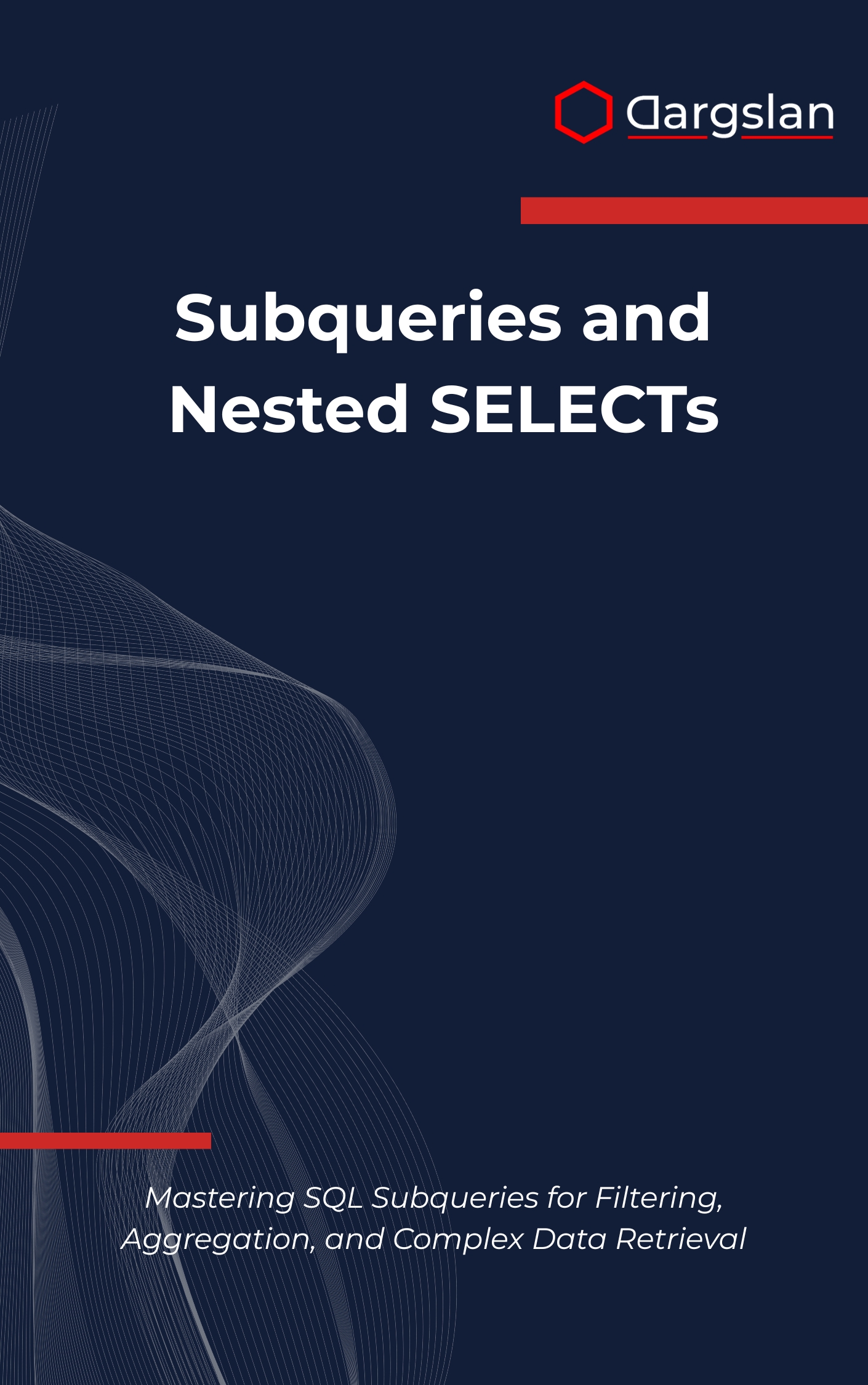Subqueries and Nested SELECTs
SQL Subquery Techniques: Advanced Guide,Master SQL subqueries and unlock powerful data retrieval techniques for complex databases.

If your analytics, reporting, or application logic is hitting a wall with basic SQL, it’s time to level up. This book reveals how subqueries unlock elegant solutions for advanced filtering, aggregation, and complex data retrieval—without resorting to messy workarounds.
From everyday business questions to nuanced, performance-critical queries, you’ll learn how to think in layers, craft maintainable logic, and ship results that scale in production.
Mastering SQL Subqueries for Filtering, Aggregation, and Complex Data Retrieval
Overview
Subqueries and Nested SELECTs is an expert, hands-on IT book designed as both a programming guide and a practical technical book for anyone who works with SQL at scale. You’ll progress from subquery fundamentals to advanced filtering techniques, learning how Nested SELECT statements simplify complex data retrieval patterns and enable analysis that would otherwise require multiple steps or procedural code. The coverage spans subqueries in SELECT clauses, subqueries in WHERE clauses, and subqueries in FROM clauses, along with specialized practices like correlated subqueries and the efficient use of EXISTS and NOT EXISTS operators for presence checks. You’ll also master subquery performance optimization, combining subqueries with joins, and smart aggregation with subqueries to deliver clean, performant solutions. Rounding out your toolkit are query debugging techniques, real-world reporting examples, and targeted SQL interview preparation—ensuring you can apply every concept in practical, professional contexts. In short, Mastering SQL Subqueries for Filtering, Aggregation, and Complex Data Retrieval is your blueprint for writing faster, clearer, and more reliable SQL in modern data environments.
Who This Book Is For
- Data analysts and BI professionals who want to transform ad hoc requests into reusable, high-performance queries that answer real business questions with precision and speed.
- Software engineers and data engineers seeking a clear path to using correlated subqueries, EXISTS/NOT EXISTS, and aggregation patterns to streamline application logic and ETL workflows.
- DBAs, students, and career switchers ready to sharpen their SQL interview preparation and master techniques that immediately elevate dashboards, reports, and production data pipelines.
Key Lessons and Takeaways
- Design efficient filtering logic with correlated subqueries and EXISTS and NOT EXISTS operators to replace expensive scans, remove duplicates, and express “top-N” or “latest record” patterns cleanly.
- Use subqueries in SELECT, WHERE, and FROM clauses to layer calculations, perform conditional aggregation with subqueries, and isolate complex logic for maintainable, testable SQL.
- Choose between joins and subqueries confidently, apply subquery performance optimization techniques, and debug nested logic using traceable steps, explain plans, and targeted test data.
Why You’ll Love This Book
Clarity meets depth: each chapter introduces a concept, demonstrates it with realistic data, and then extends it to production-ready scenarios. You’ll get step-by-step guidance, real-world reporting examples, and challenge sets that reinforce learning while building intuition for when and why to use each pattern. The result is a practical toolkit you’ll return to whenever a query gets complicated.
How to Get the Most Out of It
- Follow a layered progression: start with subquery fundamentals, then tackle subqueries in WHERE and SELECT before moving to FROM-derived tables and correlated subqueries. Wrap up with performance and debugging chapters.
- Apply as you learn: re-create the examples using the included sample datasets, compare subqueries to equivalent joins, and test EXISTS versus IN to see performance impacts on your own platform.
- Build mini-projects: create a “customer lifetime value” report using aggregation with subqueries; implement an “active vs. inactive users” audit with EXISTS and NOT EXISTS; and prototype a ranking or “most recent status” feature using correlated subqueries.
Get Your Copy
Advance your SQL from competent to expert with methods you can use immediately in analytics, apps, and data engineering. If you’re serious about clarity, speed, and correctness, this is the playbook you’ve been missing.




